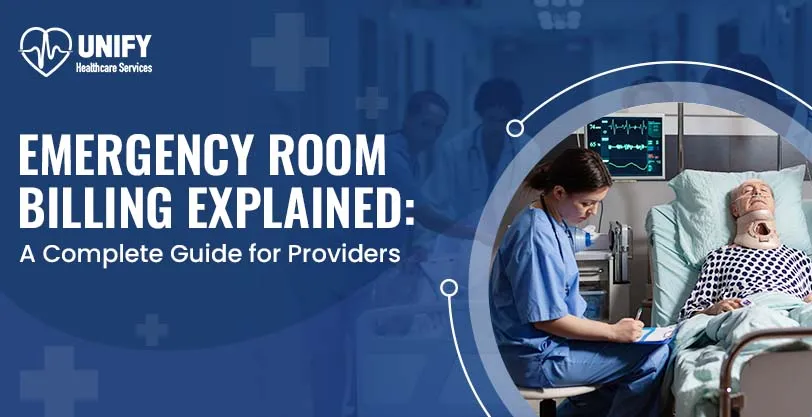The biggest nightmare any healthcare provider can face is payer downcoding. It has the power to substantially reduce reimbursements. It is not only the enemy of revenue but also mental peace. To protect your practice from the effect, healthcare providers must have regular medical billing audits within their practice.
Beyond financial impact, downcoding also hampers the operational flow of an organization. This increases administrative burdens! Once a downcoding is caught, the provider must allocate some resources to identify, appeal, and correct these claims. This is a very time-consuming and costly process. This affects the cash flow making it difficult for organizations to cover other operational expenses like payroll and supplies.
Additionally, downcoding has various compliance risks which can trigger medical billing audits from regulatory bodies or insurance payors even if there are any unintentional errors due to poor documentation. This highlights the importance of addressing downcoding proactively in healthcare organizations.
What is Payer Downcoding?
Payer downcoding refers to assigning a lower-level code to medical services provided to the patient. This decreases the reimbursement amount that should be reimbursed to the provider. Basically, it is the use of inappropriate & complex CPT or ICD codes which does not justify the care delivered.
For instance, a level 4 office visit (CPT 99214) may be downcoded to level 3 (CPT 99213) which results in decreased payments.
The insurance payer has the right to argue that the documentation does not signify moderate complexity MDM or that the diagnosis does not warrant a level 4 office visit. CPT 99214 requires a minimum of 30 minutes of total time spent during patient visit. If the time is not adequately documented, or if the payer disputes medical necessity, the claim might be downcoded which will result in decreased payment.
Differences Between Payer Downcoding & Underpayments
Payer Downcoding and Underpayments, both are significantly different revenue challenges faced by healthcare providers. Both of these are equally responsible for decreased reimbursements. However, the difference is created by their underlying causes, mechanisms & resolution strategies. These both can happen due to either intentional mistakes or any errors in documentation.
Payer downcoding decreases the complexity of care provided whereas underpayment reflects that there are differences between actual reimbursements and the ones documented. Both of these issues can be easily handled by an internal medical billing audit.
Medical Classifications Most Comonly Downcoded
Payer downcoding affects some procedures and classifications as per their complexity, documentation requirements, or payer scrutiny. Let's take a stroll through some of the most downcoded domains.
Evaluation & Management Services
Evaluation and management services like office visits and consultations are frequently downcoded as they include subjective coding decisions based on the complexity of care provided. Payers use algorithms to automatically reduce higher-level codes, claiming insufficient documentation to justify higher complexity.
Surgical Procedures
Sometimes the documentation doesn't support the complexity of the surgery or additional treatments rendered. Such procedures may get downcoded, knowingly or unknowingly.
Colonoscopies & Endoscopic Procedures
Some procedures are downcoded when a payer interprets them as a less extensive process than what was performed.
Anesthesia Services
Anesthesia billing is dependent on precise time tracking and complexity. If the documentation does not align accurately with the recorded time or complexity, the payer might downcode the service.
Chronic Disease Management
Chronic conditions like diabetes or bronchitis get downcoded pretty often when generic codes are used instead of more specific ones. This reflects the complications or severity of the treatment.
Radiological & Imaging Services
Imaging procedures might be downcoded when a payer determines that a lower-level study was apt based on the treatment or diagnosis rendered.
Recent Developments in Downcoding
Insurance payers nowadays use advanced analytical tools and big data to target high-value claims. This makes it hard for healthcare providers and they have to focus more on denials and downcoded claims that need additional review.
For insurance payers, the point is very easy and strategic. It costs very little to downcode claims and DRGs for the payer. But it needs heavy resources for healthcare providers to appeal them back.
While avoiding challenging medical necessity outright, claim denials or downcoding often questions the clinical evidence that supports initial DRG determination.
The American Academy of Professional Coders believes that DRG downgrade due to clinical validation is an issue. Healthcare providers have been scrutinizing codes that raise the DRG and accompanying payment to determine whether the stated condition is supported by evidence. Claims that have high risk of scrutiny and denial include one diagnosis code that is a complication which can raise DRG and reimbursement.
How to Counter Payer Downcoding Practices?
Responding to payer downcoding is an important strategy for maintaining financial stability. It costs the provider much more to appeal than for payers to downcode. This is why even the slightest prevention is worth it. Now let's try to understand different ways in which one can reduce partial denials and downcoded claims.
Improve Clinical Documentation
Healthcare providers must have specialized CDI team for inpatient and outpatient so that they can capture all the appropriate documentation for all patient encounters. Especially surgical procedures and inpatient admissions related to DRG downgrade targets like sepsis.
Focus on High-Severity Cases
Several high cost MCC and CC cases such as malnutrition, respiratory failure, renal failure and other severe conditions are downcoding targets that need to be the focus of CDI program. The coders and clinicians must work as a team to improve documentation for these conditions.
Create Clinical Treatment Policies
Providers must be consistent about their diagnosis and accurately code high-target cases. They must also be persistent about communicating that you have a uniform policy regarding clinical treatment and coding of these cases based on specific guidance.
Use Your Data
The statistics you have play an important role in delivering important insights into payer behaviors around denials and downcoding. These insights are very valuable when you are negotiating terms with the insurance payer or dealing with arbitration or considering legal action to recoup revenue.
Outsource To Professionals; Lead A Progressive Practice
While the tensions are always high in healthcare practice, additional burdens like payer downcoding are a massive strike to the providers peace. This is where professional medical billing companies like Unify Healthcare Services can help you restore your revenue and flourish your practice.
Unify Healthcare Services is a medical billing company that has a huge client base of small as well as big healthcare organizations. We have trained experts who are well-versed in all the elements of medical billing. Finding us is very easy. Just search “Medical billing services in Masachusetts” and you will find us in the top results. That's how good we are!
We make sure that all your claims are accurate so that there is no lag in reimbursements. Our professionals will handle all your administrative tasks with precision so that you can focus solely on your core responsibility. This enhances patient satisfaction, and you are more likely to be recommended. This increases the footfall of your practice and with us by your side, your organization will flourish with revenue.
We understand that healthcare is a difficult niche. This is why we do not just offer our services; we offer mental peace.




















.webp)




 1.jpg)